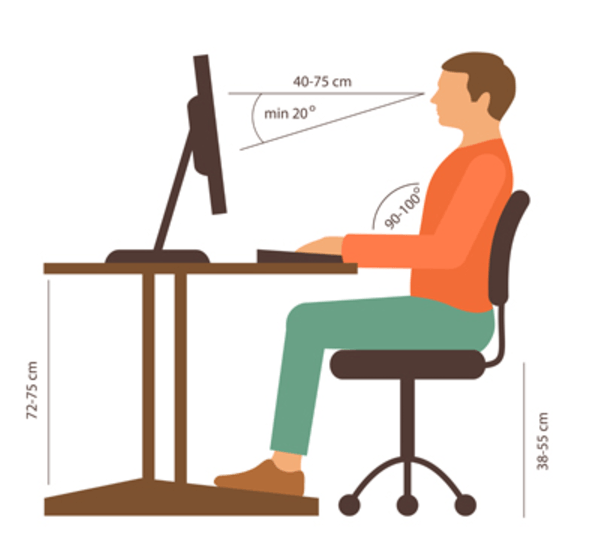How do Smartphones Affect Your Eyes?
Did you know that the average person checks their phone 150 times a day? That’s right! And with so much time spent looking at our phones, it’s no wonder that many of us are starting to experience symptoms of digital eye strain.
Watch more videos like this on Shekar Eye Hospital YouTube Channel
In this blog post, we will discuss the effects of smartphone usage on the eyes and how to prevent digital eye strain from occurring.
As we all know, we live in a digital era, for many of us smartphones have become an essential part of our daily lives. Whether we are checking emails, browsing social media, or navigating to new locations with our handy built-in GPS systems, it seems as though there is always something new and exciting to do on our phones.
Recent studies have shown that, on average, the screen time usage of an adult is a minimum of 2 hours per day and 80% of the people use more than one device simultaneously. Does this have an adverse effect?

Side effects of Smartphone usage
One significant impact of smartphone usage is it reduces the blink reflex. The normal blink reflex in humans is 12-15 times per minute. It acts as a protective mechanism of the eyes as it helps in the release of the tear film, distribution of tear film and protects the ocular surface as a barrier.
As we stare at our screens for long periods, we forget to blink regularly, resulting in dry and irritated eyes.
In addition, extraneous light from our screens can mess with our natural circadian rhythm and lead to short-term disruptions in sleep cycles as it restrains the production of melatonin, the hormone that controls your sleep-wake cycles. Though this may not seem like a big deal at first, chronic lack of sleep can have severe consequences for both mental and physical health.
Looking at screens for long periods can have a negative effect on your eyesight. The blue light emitted from screens can cause accommodative spasms, which is a condition that makes it difficult for your eyes to focus.
Eye fatigue and dryness are common side effects of working long hours in front of a computer screen. This is due to the bright, harsh light from the screens themselves, which can cause strain, irritation, and even inflammation over time. Additionally, staring at small text or graphics for extended periods can lead to dryness and discomfort in the eyes. Prolonged exposure to blue light can also induce myopia or nearsightedness.
Symptoms
Symptoms of digital eye strain can include: headaches, neck and shoulder pain, dry eyes, redness or irritation in the eyes, and difficulty focusing. If you are experiencing any of these symptoms, it’s essential to take a break from your screen time and rest your eyes.
While symptoms of digital eye strain are often temporary and not serious, there are some harmful effects of smartphone usage on the eyes that can occur if the condition is left untreated. Prolonged use of electronic devices can lead to computer vision syndrome (CVS).
CVS is a group of symptoms that include irritation, burning sensation, light sensitivity, frequent blinking of the eyes, refractive errors or progression of the existing refractive errors, dry eyes, eye fatigue, eyestrain, headaches, neck pain, shoulder pain, and dizziness. In severe cases, CVS can even cause nausea and vomiting. If you think you may be suffering from CVS, it’s essential to see an eye doctor as soon as possible.
While there are some harmful effects of smartphone usage on the eyes, you can also take some simple steps to prevent these effects.
Here are some tips to help avoid digital eye strain:
- Reduce the screen time and use it only when required and give some rest to the eyes. Take breaks often when using electronic devices. Follow the 20-20-20 rule, that is, Every 20 minutes, look away from your screen for at least 20 seconds to allow your eyes a chance to refocus.
- Regular eye exams help you keep your eye health in check and ensure your problems aren’t worse than normal eye strain.
- Make sure the lighting in your room is not too bright or too dim. Adjusting the brightness of your screen can also help reduce eye strain.
- Use artificial tears or the doctor can prescribe some lubricating drops if your eyes feel dry or irritated.
- If you wear glasses, make sure they have the correct prescription and are clean.
Here are a few Ergonomics tips to help you stay comfortable while using your computer:
- Position your monitor slightly below eye level, so you don’t have to strain your neck.
- Position the monitor at least 20 inches (51 cm) from your eyes
- Sit up straight in your chair and keep your shoulders relaxed. Avoid hunching over or slouching.
- Rest your wrists on a cushioned surface when typing to avoid putting too much pressure on them.
- Reduce Glare by adjusting the screen position or by using an anti-glare matte screen where possible.
- Take frequent breaks to stretch your muscles and give your eyes a break from the screen.

By following these simple tips, you can help reduce the risk of developing ergonomic-related problems. However, if you are still experiencing symptoms, we encourage you to make an appointment with a doctor to rule out any potential causes. We hope this information has been helpful. Thanks for reading 😊






